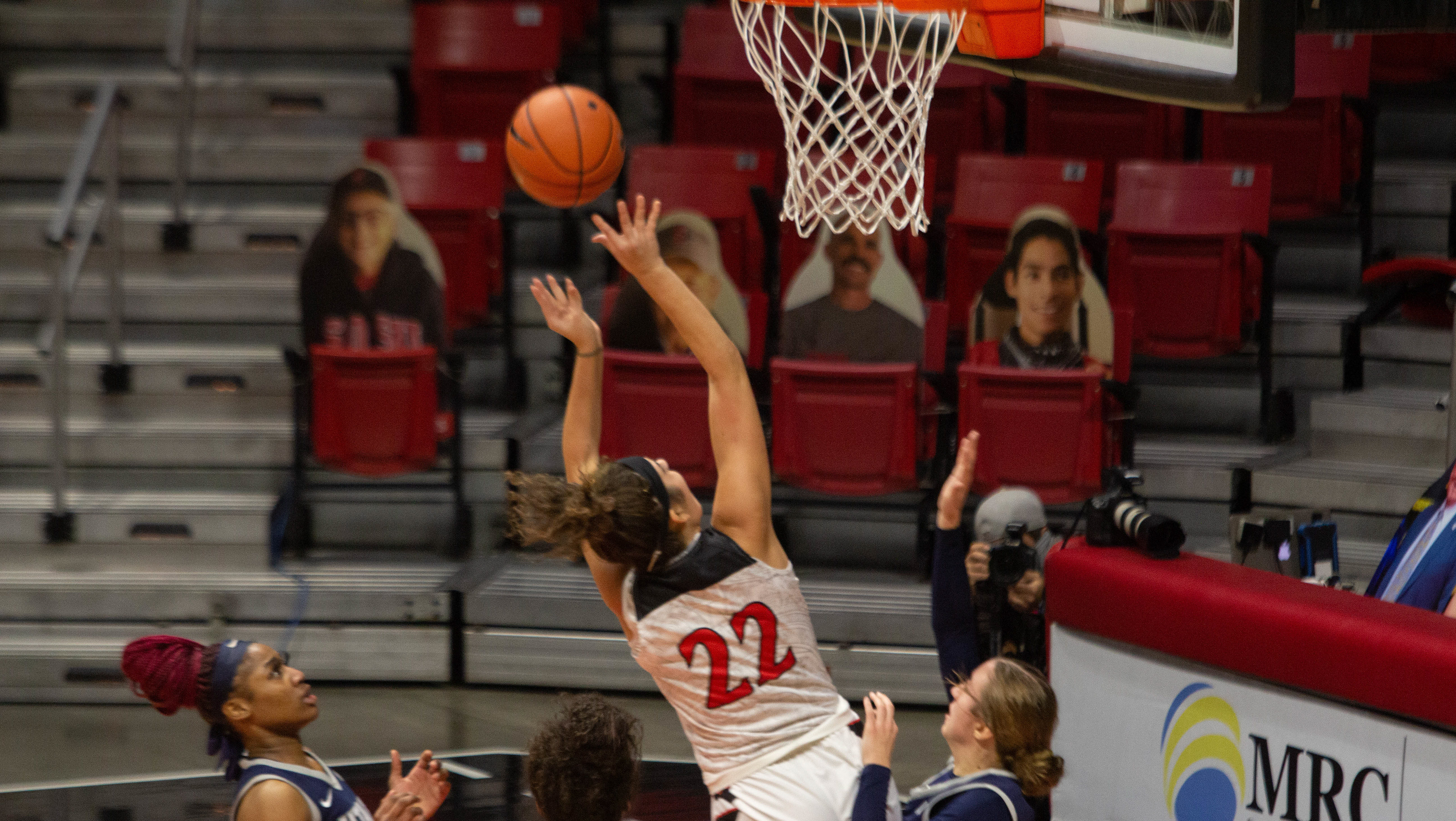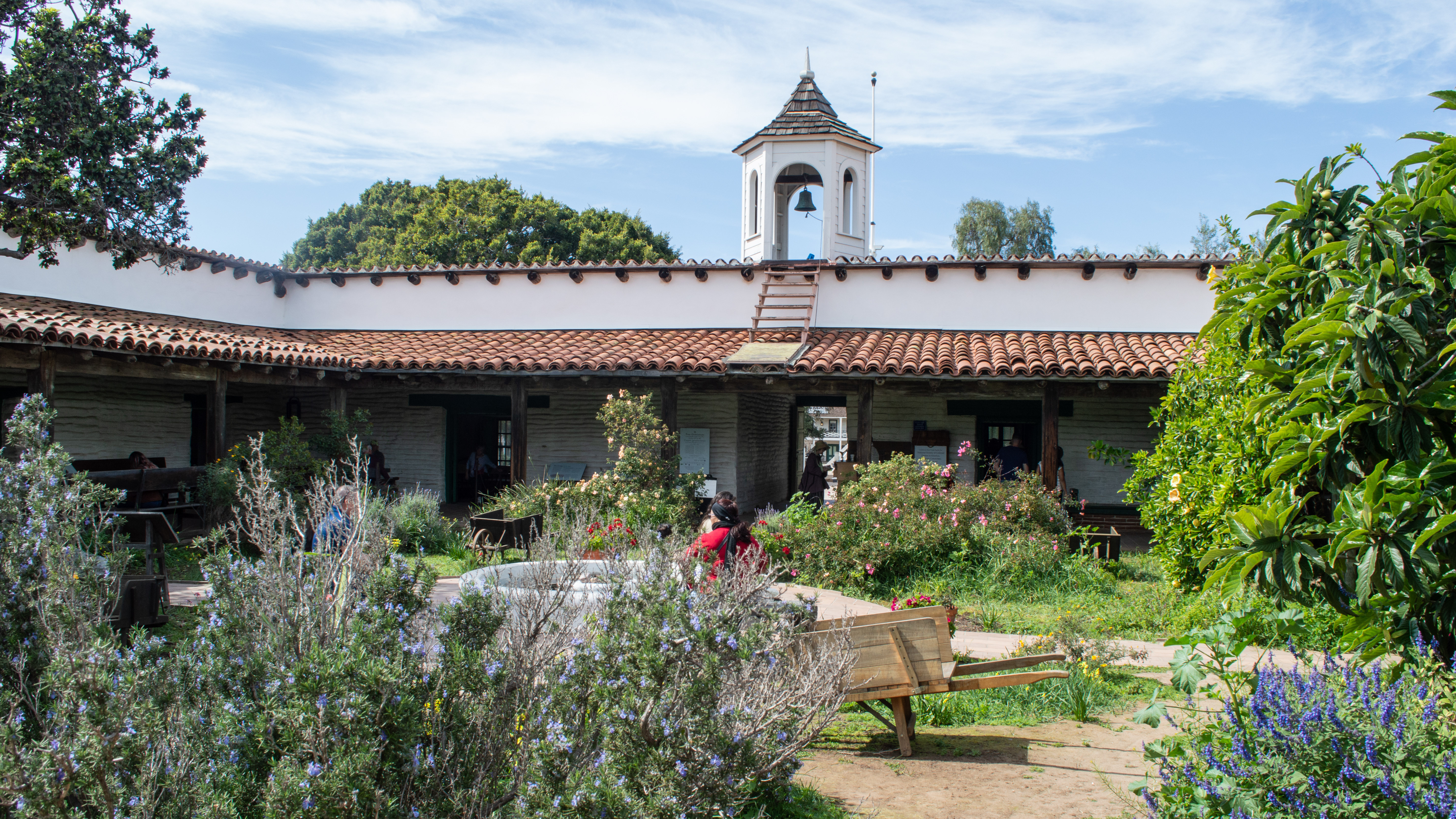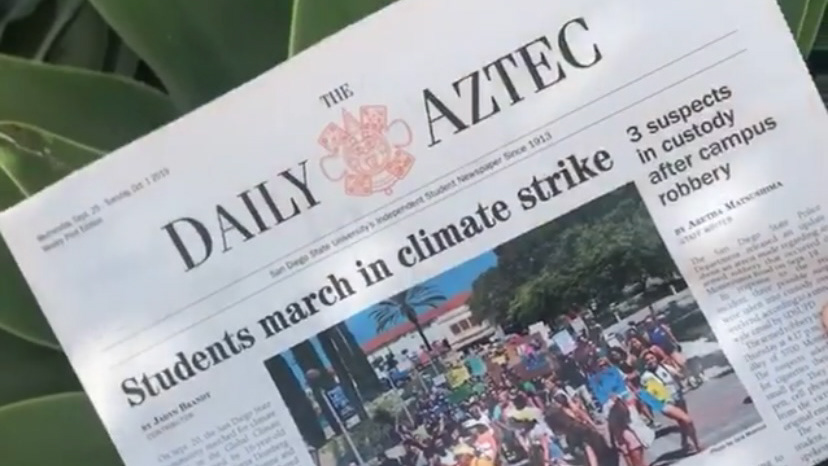A Year into COVID-19 — How Does it Affect K-12
San Diego Families?
The pandemic has changed every aspect of life, and forcing work and school to be conducted at home brought several issues to the national eye
Until schools were allowed to reopen in April, campuses across the country were left vacant, with no students on campus for over a year. (Alexa Oslowski)
When the COVID-19 pandemic forced school and work to be conducted at home, broadband and internet accessibility quickly became essential. Even before the pandemic, San Diego County did not track which residents lacked proper internet access — and the pandemic highlighted how the conversation has taken a new angle — that internet is no longer a privilege, it is a necessity.
Castle Park Middle School in Chula Vista, San Ysidro High School and Chula Vista Elementary School are all in underfunded and underrepresented neighborhoods of San Diego County. The Voice of San Diego reported how severely the pandemic left behind these households. Now that the United States has passed its one-year anniversary of the first closings and lockdowns — what has the County done to ensure these households and these students receive the best online equivalent they can, so they do not eventually return in person even farther behind?
What Happened When Schools First Closed Unexpectedly
In March 2020, according to CalMatters, San Diego Unified School District was one of the first in the state to close down schools, and not long after that, more than 5.7 million children would be spending the next year learning from home.
Castle Park Middle School Principal William Walsh discussed how his community was hit by broadband issues and trying to navigate new online tools like Zoom and Google classroom.
“We (myself and IT Tech) were available by cell phone and literally texting parents back and forth screenshots of how to log on and those kinds of things,” Walsh said. “With the greater broadband issues, our district used forward-thinking and was able to provide students hotspots. We were able to secure a number of those and make sure that kids have access so we did not have anybody that was not able to access their curricular materials.”
This February, the Federal Government took its first steps to address these disparities by issuing monthly discounts on internet bills to Americans in need of this assistance, the San Diego Union-Tribune reported. The biggest complaints from San Diego residents include a lack of connectivity, lack of devices and lack of help, according to another report done by The Voice of San Diego.
College prep starts in middle school, and there’s no way to know how a year of distance learning truly affected students. (Alexa Oslowski)
For San Ysidro School District Board of Education President Antonio Martinez, his district faced a number of obstacles that went well beyond just the classroom.
“We were able to provide hotspots for students that didn’t have access to the internet. We received a grant, and we collaborated with the San Diego County Office of Education to receive 1,050 hotspots for students that didn’t have access to the internet,” Martinez said. “When you talk about some of the kids here, and this is not just here in San Ysidro but all throughout the South Bay in particular, typically a lot of kids are transitionally homeless. Often a lot of times people think of homelessness as someone who you see living in the street. But the reality is is that transitional homeless folks, you know, are not necessarily living outside, but they don’t have a stable living environment.”
Adjusting for a Full Academic Year Online
School teachers were not the only ones who were suddenly thrown into a learning environment they were not expecting. High School sophomore Anissa Ruiz shared the biggest struggles she went through back in spring 2020, and she even transferred schools in the middle of the pandemic in order to avoid certain issues.
“Only one of my classes was doing on Zoom, like actually having a zoom class or call and it was optional anyway,” Ruiz said. “But mostly it was online work on Google Classroom, where they put up assignments. So it was just really unorganized, but it did the job, I guess.”
Many districts include families who have struggles beyond broadband access. Some struggled with job loss, death from COVID and food insecurity. Many school staff worked on ways they could support families to offset these problems.
Eduardo Reyes, Chula Vista Elementary School District Board president, said how his district spans many different income levels and socioeconomic statuses, and his job required finding ways to ensure every child had an equal education.
“We provided food services and breakfast and lunch for everyone, so it didn’t matter if they qualify for free reduced lunch or not. If they were there, they were fed. But I wish we could have provided more face-to-face social and emotional support,” Reyes said. “We couldn’t because of the guidelines, but that to me is very important because if you look at the numbers for example if they’re having issues with domestic violence or abuse or neglect. At school, it’s a safe haven for the students. And now the students are at home. And that’s serious.”
Preparing for a Return to Campus
According to reports from The New York Times, many governors across the country were pushing for schools to open in some capacity starting in April. Even though education workers were offered the vaccine prior to this, and now anyone 16 and older can be vaccinated, cases did increase after schools returned in person.
The push for reopening has been prevalent for many months of the pandemic, and as California counties shifted between all of the reopening tiers, many schools and districts were left in confusion, according to ABC10 News. However, not every school attempted a reopening prior to April.
“We did not attempt any reopening. The priority for us was making sure our numbers were low in terms of reaching a certain tier. When you look at the county rates, they take the average. But the reality, the average of the county San Diego even though they might be in a certain tier, that’s not the reality in my hometown,” Martinez said. “So my zip codes, you look at the average and sure the county-wide average is lower, but here it’s not. It wasn’t as good so we definitely took our time.”
Principal Walsh at Castle Park Middle School also shared his opposition to returning before April, as his district and many of his zip codes were hardest hit by the virus.
Just like colleges, K-12 schools sat empty, with in-person instruction only recently returning. (Photo by Changbok Ko on Unsplash)
“We’ve had a number of students with COVID in their household and a number of family members that we’ve lost along the way, including the family of staff members and of students, so no I intentionally did not try to bring students and staff back for the risk of potentially being a place where we could spread the virus,” Walsh said. “If you haven’t gone to a funeral for a family member that died of COVID, where the living family members are just devastated because a year prior, there was no such thing as COVID, it’s a heart-wrenching experience.”
As the population becomes eligible for the vaccines and California sees case rates dropping, many schools in San Diego County are offering students a choice for how they wish to continue the rest of this academic year. Students could either opt-in for in-person classes, or remain fully online until the summer.
“I did not decide to go back because right now, I kind of like being online and I think it’s a lot less stressful,” Ruiz said. “I don’t know how I feel about going back and being in a classroom full of people. I’m used to being at home.”
Castle Park Middle School did not reopen until April due to their community being highly impacted by COVID-19 transmission. (Alexa Oslowski)
Now that schools are starting to reopen, children are starting to spend limited amounts of time back in a classroom. From teachers to administration, to school board members, everyone was an integral component to making this past year work. Districts are looking ahead with tentative talks and plan to continue expanding in-person teaching as 2021 goes on and another school year starts in August.
“I see this as a good opportunity to really rethink how we provide education and how we provide that support,” Reyes said. “It’s almost like a brand new chapter. Like okay, we’ve gone through this. What can we do, where things are working, where are the things we can enhance? So I think it’s time for reflection and it’s time for trying out new things that really help out education as well.”
This project was produced by Alexandra Oslowski as a published learning experience in JMS 550 Multimedia News Lab, part of the Journalism and Media Studies Program at San Diego State University.









